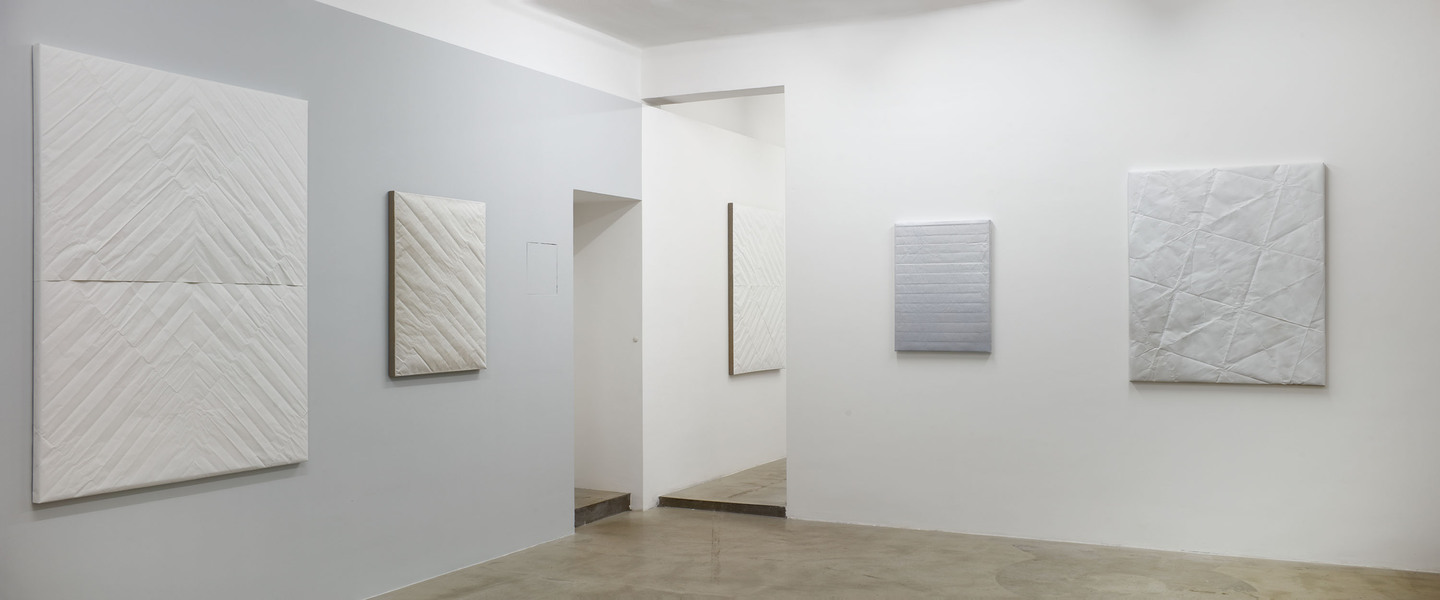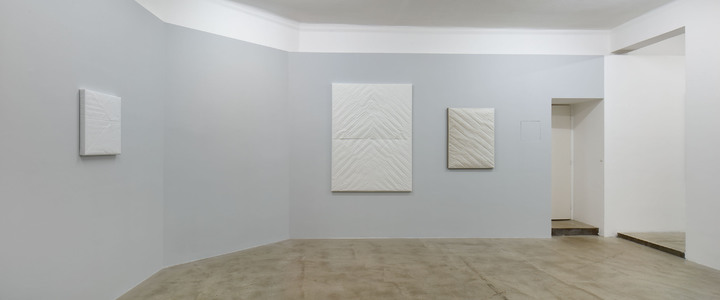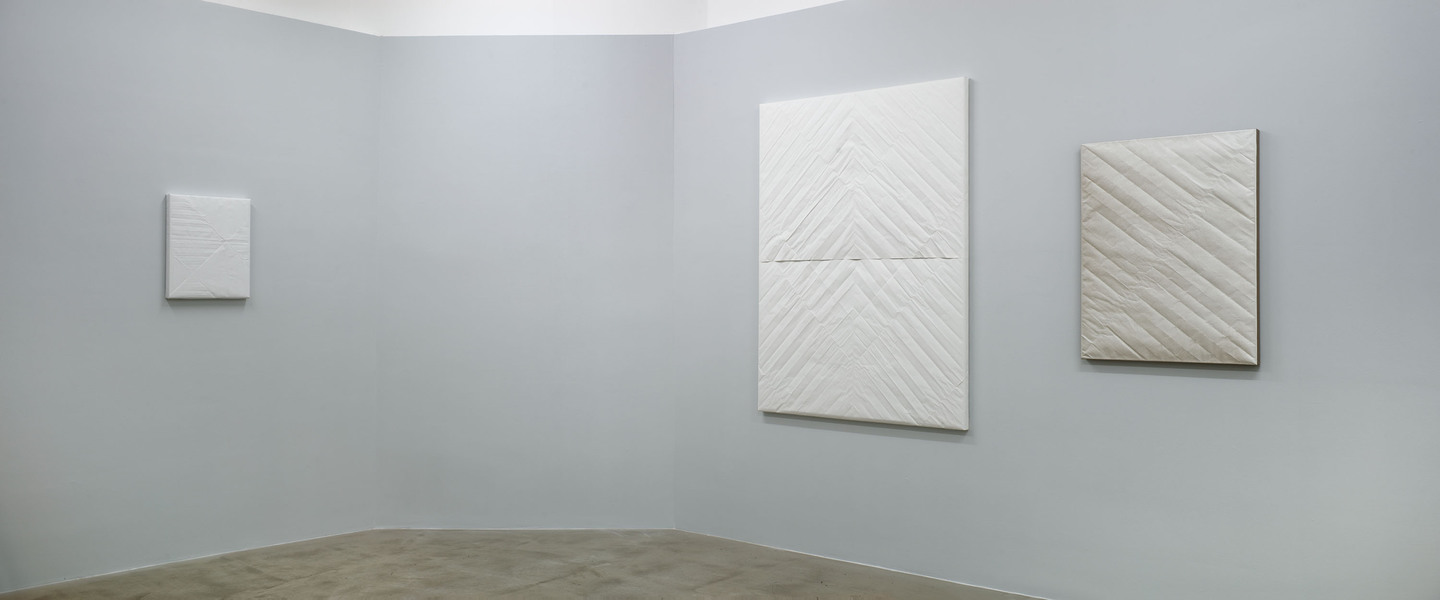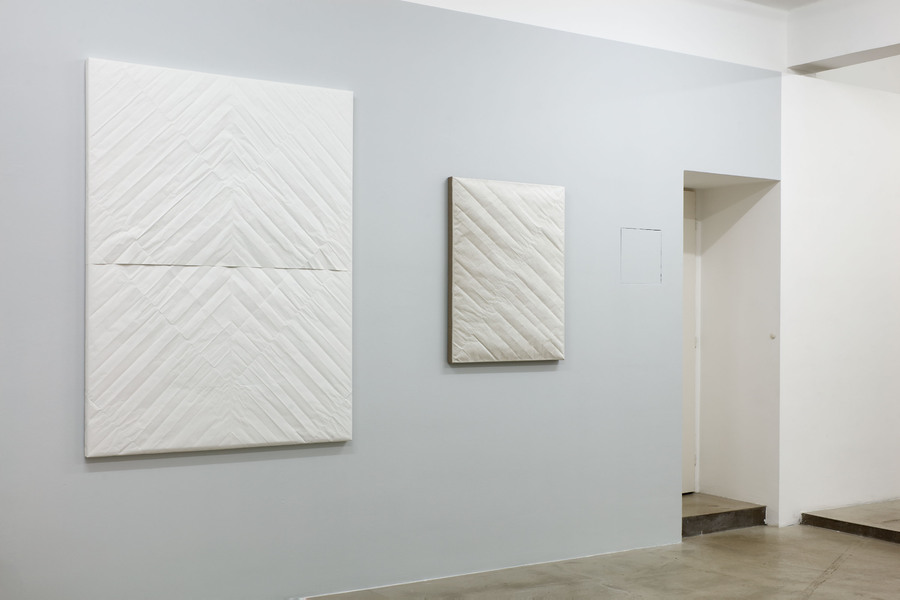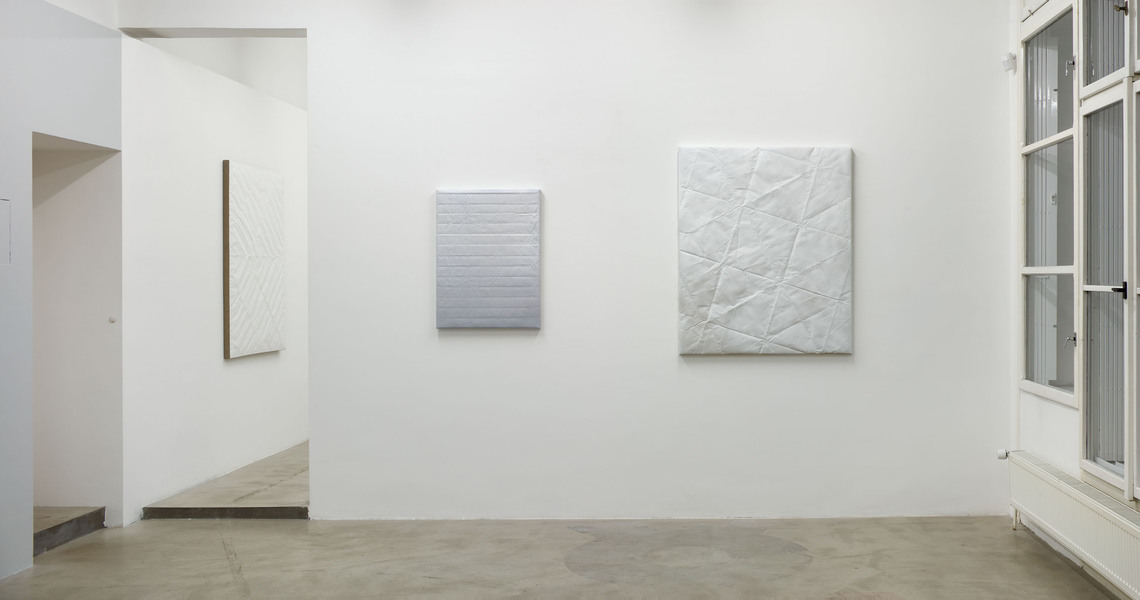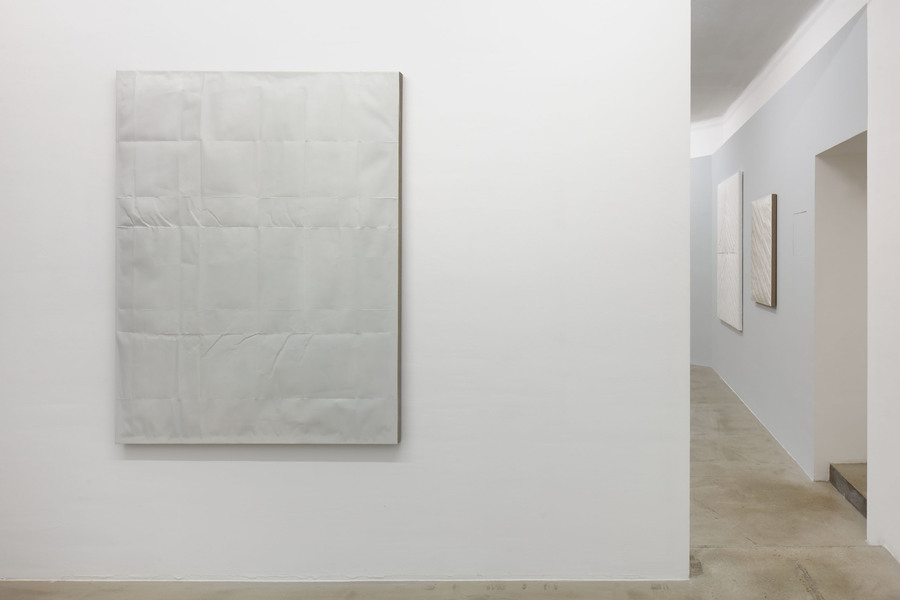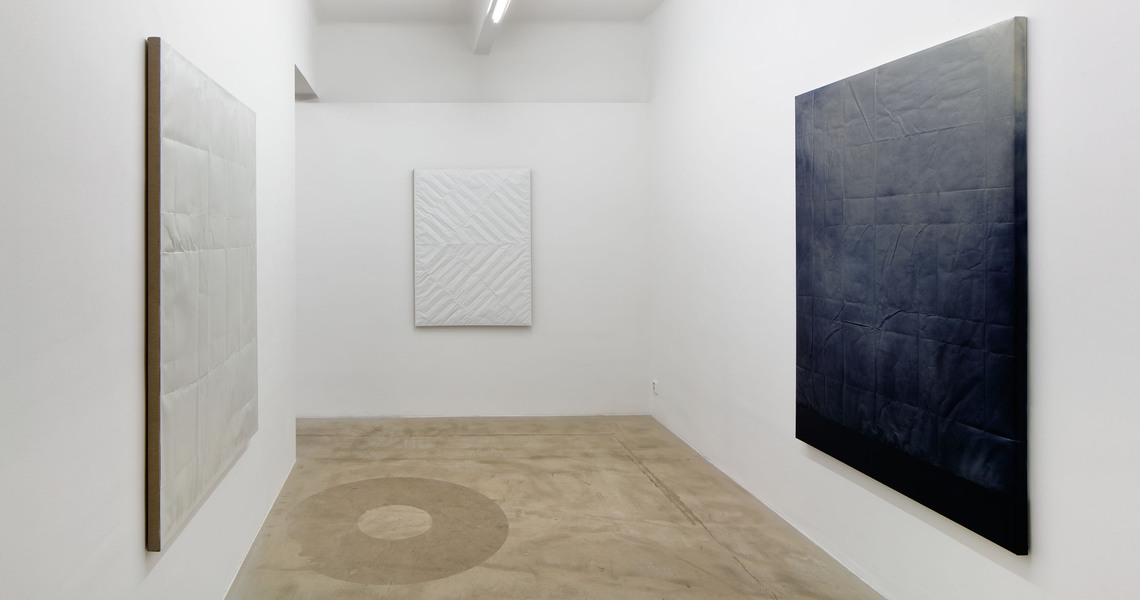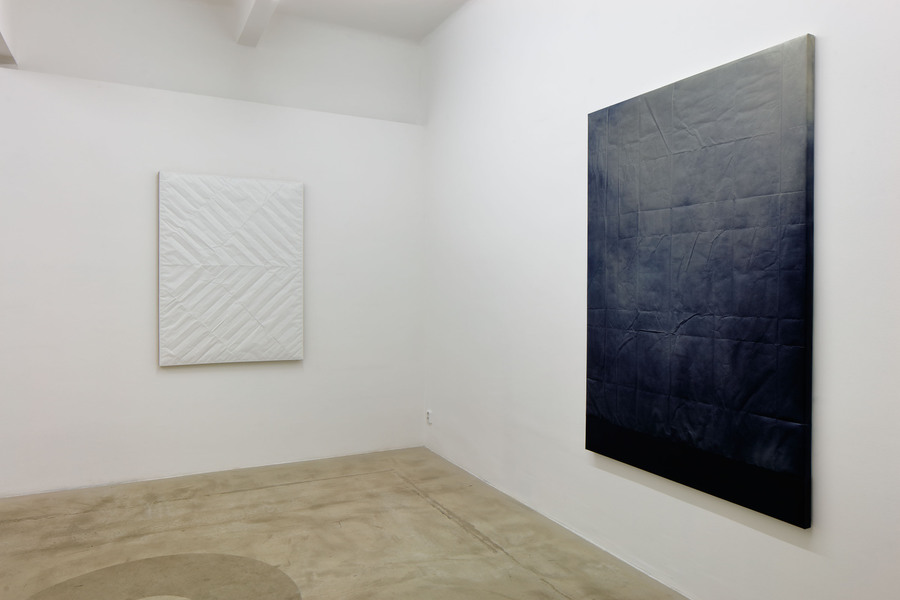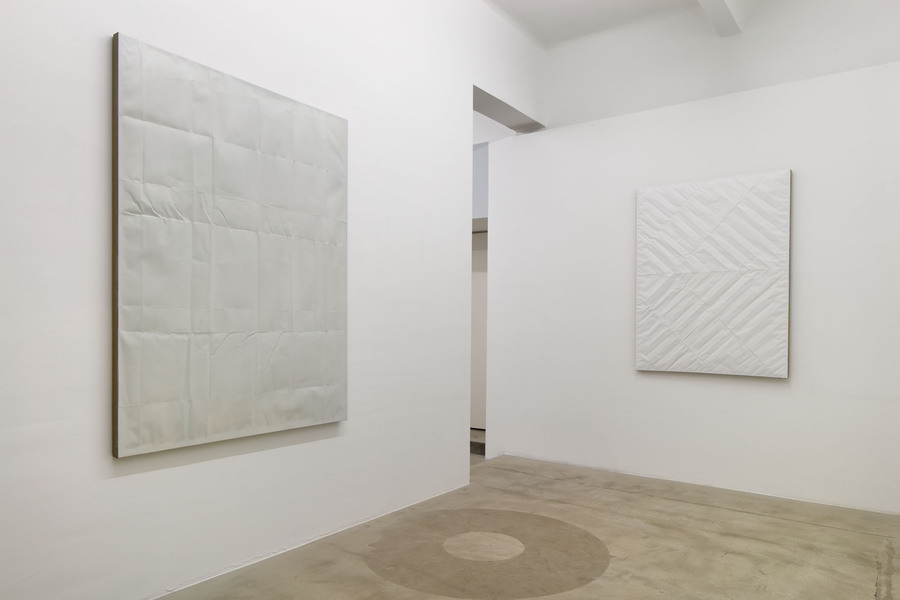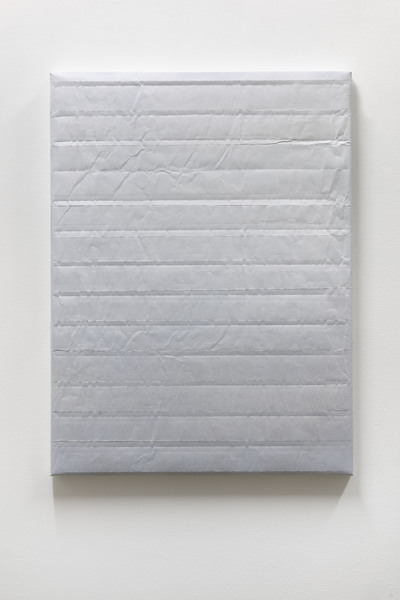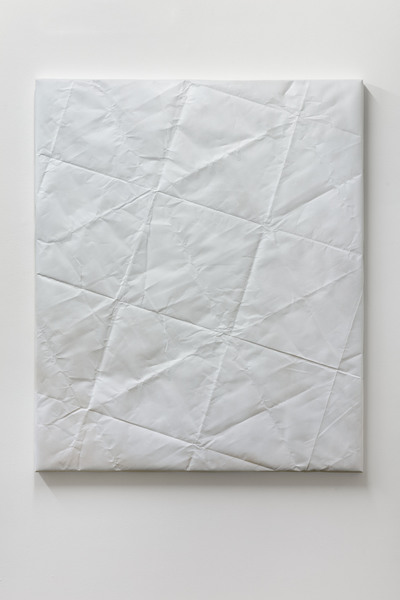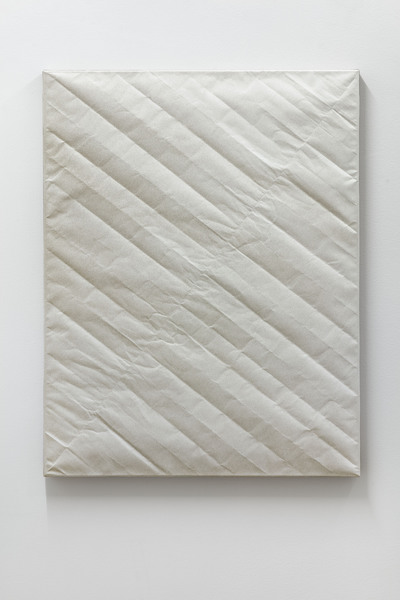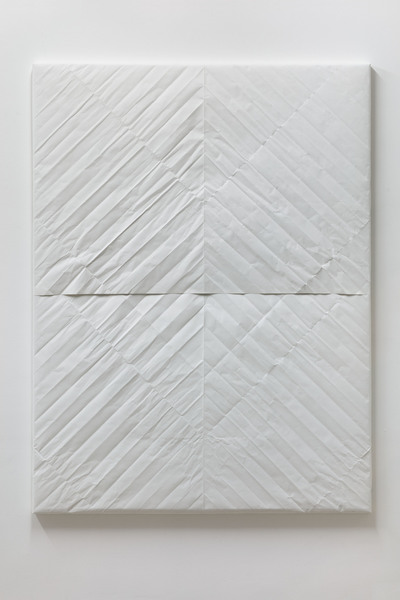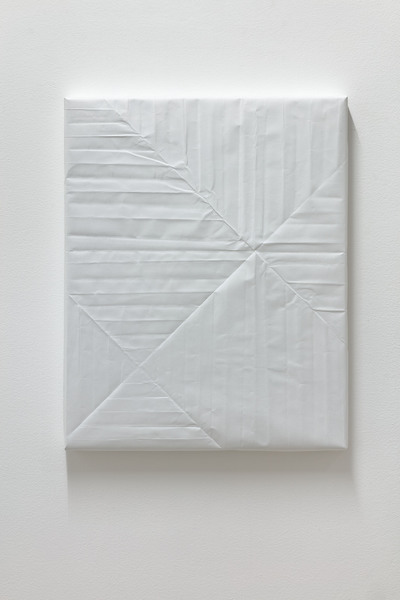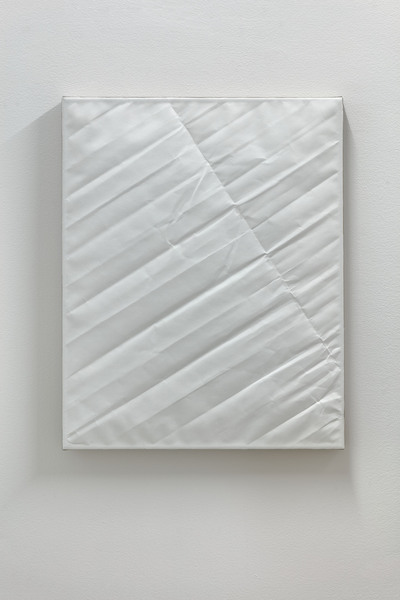“It’s growing. It’s growing vertically and horizontally. It’s growing and grooving. It’s grooving vertically and horizontally. It’s growing by grooving. It’s grooving by growing. Grooving gives rise to structure. A vertical and horizontal structure. An organic structure of relations, a structure of horizontal and vertical unity. It diversifies vertically. It diversifies into all levels of its essence. It gains its quality. That’s what makes it unique. That’s what gives it necessary stability. It diversifies horizontally. It diversifies into all aspects of its existence. It gains its quantity. That’s what enriches it. That’s what gives it necessary flexibility.” Such is the beginning of Bohumila Grögerová’s text included in the collection Meanders which was not published by a certain Czech publishing house in 1969 only to be published a year later in German translation and accompanied by four photograms by Běla Kolářová.
Grögerová’s sentences could well describe the paper images by Monika Žáková. The visible grooves would merge with the imaginary ones, outlined by the artist’s personal anamnesis of her previous works which she picks up and develops, and so would biographical reverberations with the works of a variety of modern artists and the layers revealed during an archaeological research of the image surface in which material prevails over representation, which has always been material. The links with Kolářová are multiple, too. Although Žáková’s images are not photographic, they resemble the photograms due to the production process, the work of touching, the use of light as a construction unit.
We could try and seek a term to capture the method of Monika Žáková, since the methodical character of her approach is very clear. Žáková relates to modernism and especially the 1960s which seem to position themselves perpendicularly to the historical axis as if they were still contemporary. The historical register of methods offers crumplages created by Jiří Kolář, however, this time they would be different, more thorough, more careful, more elaborate, or the froasages by Ladislav Novák, however, this time without residual, recurrent pictoriality. In an allusion to Grögerová and Jiří and Běla Kolář, we could opt for visual poetry if it were able to free itself from itself; like a subject-less poem, a non-poem that can do without words and can never fully imitate the arrangement of verses, when paper gives up its edges and doubts the surface in its folds; like blank sheets of paper whose rectangular formats repeat themselves on the studio walls, the canvas frames and their photographic reproductions, in all shades of white. We could also consider derealization if it could assume a more complex comprehension of reality than that described by Kolář as too simple. It would be a derealization preceding realization, realization by derealization, de-derealization.
Žáková’s monochromes are not disturbed from the outside, by splashes of colour, the point of a pencil, the blade of a knife, but rather from the inside: they diversify and multiply by grooving. They remind of grids which, according to Rosalind Krauss, proved the will to silence and hostility to literature, narrative, discourse in modernist painting. The grids of Monika Žáková both capture and release – the look as well as meaning. Signs emerge and escape at the same time. We cannot quite speak about their content, and we would do justice to their form if we could be silent about it.
Vojtěch Märc

